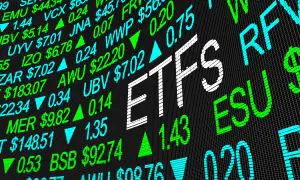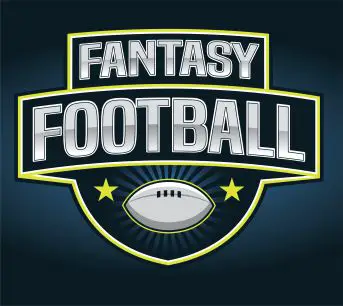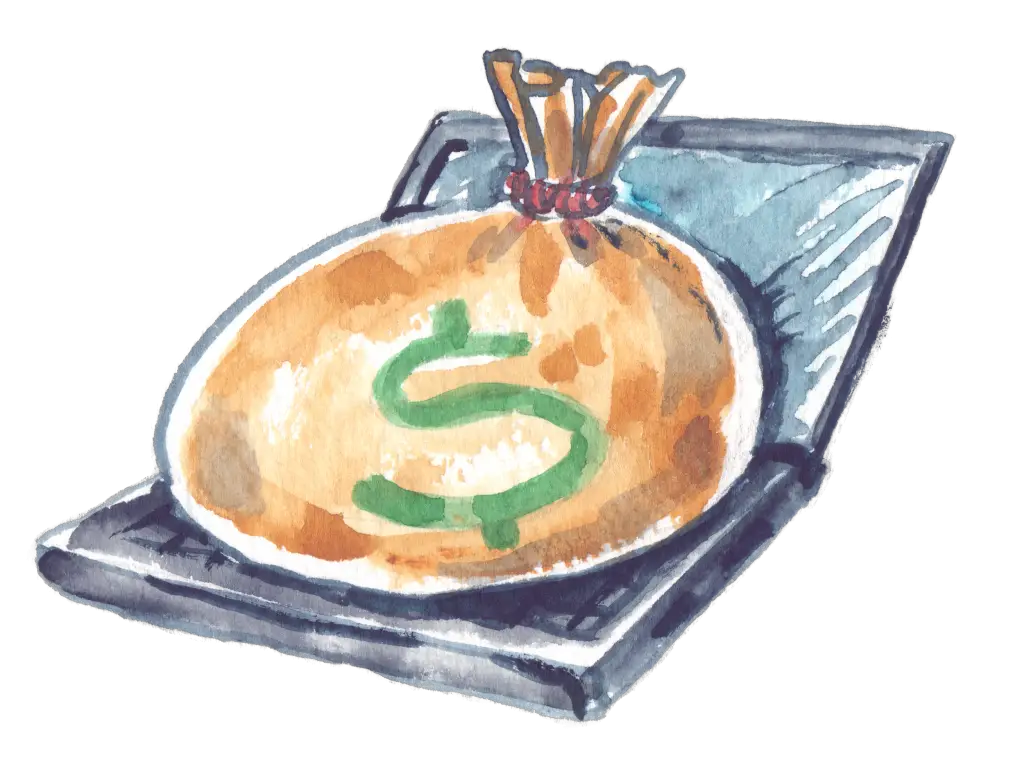
CommonCentsMom.com is advertiser-supported: we may earn compensation from the products and offers mentioned in this article. However, any expressed opinions are our own and aren't influenced by compensation. The contents of the CommonCentsMom.com website, such as text, graphics, images, and other material contained on this site (“Content”) are for informational purposes only. The Content is not intended to be a substitute for professional financial or legal advice. Always seek the advice of your Financial Advisor, CPA and Lawyer with any questions you may have regarding your situation. Never disregard professional advice or delay in seeking it because of something you have read on this website!
International ETFs (ETFs that invest in a stock market outside of the US) can be defined as ETFs that invest in the stocks of other countries. The shares of international ETFs are traded like shares of American-based ETFs. The advantages of investing in international ETF are lower expense ratios, tax efficiency and better market exposure.
An International Equity ETF invests in stocks of different countries. Foreign Currency Currency Hedged Bond: A foreign currency currency hedged bond investment is basically an investment which is designed to give exposure to foreign currencies while giving a return in domestic currency. It gives an exposure to other countries without incurring exchange rate risk.
The Advantages of Buying An ETF
An ETF is a very efficient way to invest in the market. The main reason for this is because of its passive nature. An investor does not need to pick individual stocks to invest in, instead he can simply buy a basket of stocks that track the same index.
In addition, because there are many more investors participating in the market, the prices for ETFs tend to move faster than those for individual stocks which results in more efficient pricing mechanisms.
The overall liquidity of an ETF is also much higher than that of individual stocks. This means that investors can buy and sell shares much easier than they would if they were trying to pick individual stocks.
The Disadvantages of Buying An ETF
The main disadvantage of an ETF is the fact that it is not an actual security. An investor does not own the stocks held in the ETF. Instead, he only has shares of the ETF. This means that an investor is only protected if the index he invested in has a decrease in value, and not if the actual stocks he bought decreased in value.
However, this does not mean that it cannot be a disadvantage for some investors because many people may want to own specific types of companies and will not want to invest in an index with a large diversified portfolio of stocks.
This can be a good option for some investors, but most people will want to buy an ETF because it gives them the diversification they need while still giving them the liquidity they desire.

10 Best International ETF that You Can Consider
iShares MSCI Canada ETF
Canada is not often included in a prestigious international ETF, but the iShares MSCI Canada ETF (EWC) is one of the best international ETF of the year. EWC has returned a remarkable 20.31% – enough to cause even Warren Buffet to be proud. EWC’s return on equity over the past five years is also extremely strong at 10.83%. EWC investors have a wonderful opportunity to invest in the biggest companies in Canada. The iShares MSCI Canada ETF invests in large-cap Canadian companies such as Royal Bank of Canada, Shopify, Toronto Dominion Bank, and Bank of Nova Scotia.
iShares Core MSCI Total International Stock ETF
The iShares Core MSCI Total International Stock ETF is a fund that tracks the MSCI ACWI ex-US Small Cap Index. This index is designed to track the performance of companies with a market capitalization of less than $1 billion and generally excludes large U.S.-based companies and all foreign government bonds (“foreign securities”). The index is made up of approximately 3,700 stocks from countries such as Japan, Australia, Canada and Switzerland. As with most international equity ETFs, there are two versions available—a “passive” version that charges a fee to shareholders and an “active” version that does not charge fees but is exposed to potentially higher fees on trade execution if it must execute trades outside its “bucket” or buy/sell limits.
Vanguard Total World Stock ETF
Vanguard Total World Stock ETF (symbol VTWO) is an exchange-traded fund (ETF) sponsored by Vanguard Group. The ETF seeks to track the investment results of a benchmark index that represents a worldwide portfolio of stocks, which are weighted by market capitalization. The fund has $144.6 billion in assets under management as of June 30, 2018 and charges 0.04% per year in expenses, or $0.005 per $1,000 invested. The fund’s primary index is the MSCI All Country World Index, which measures the performance of stock markets around the world. The fund’s top 10 holdings include Apple Inc., Google Inc., Johnson & Johnson, Exxon Mobil Corp., Chevron Corp., IBM Corporation, Facebook Inc., Alibaba Group Holding Limited, Microsoft Corporation and Alphabet Inc..
iShares MSCI China ETF
This ETF was created to track the MSCI China Index. The iShares MSCI China ETF (NYSEARCA:HIN) tracks the performance of the MSCI China Index, which includes approximately 500 stocks that are actively traded on the Chinese market. The index has a market capitalization of $355 billion, and it is a large-cap stock fund. The index tracks a market segment that is thought to be one of the most efficient and effective for generating global equity returns. This segment focuses on large-cap stocks in the Chinese market. This strategy is meant to help investors gain exposure to the growth of this emerging economy, as well as investing in some of its biggest companies. These large-cap companies are said to be poised for long-term growth. The MSCI China Index has an average dividend yield of 2.75%.
Schwab Emerging Markets Equity ETF
This ETF provides exposure to a diversified portfolio of companies from emerging markets. The ETF’s holdings include large-cap and mid-cap companies from Argentina, Brazil, Chile, China, Colombia, Czech Republic, Hungary, India, Israel, Mexico and South Africa. In addition to foreign large-cap and mid-cap stocks, the fund includes a mix of stocks that include small-caps (4%) and microcaps (3%), as well as ETFs that have exposure to emerging markets. The fund has an expense ratio of 0.99%.
iShares MSCI Pacific ex-Japan ETF
The MSCI Pacific ex-Japan ETF (JPC) is a USD-denominated exchange-traded fund that seeks to track the performance of the MSCI Pacific ex-Japan Index. The Index measures the performance of stocks included in the MSCI Pacific ex-Japan Index, excluding Japanese companies. The Index was first introduced on June 30, 2005. It currently comprises 2,088 stocks and covers 23 countries across Asia. The fund’s top ten holdings include Samsung Electronics Co., Ltd., Hong Kong Telecom Limited, China Mobile Limited and Singapore Telecommunications Limited (see “Fund Manager Report” below).
Vanguard FTSE Pacific ETF
Vanguard FTSE Pacific ETF (VPL) is designed to provide investment results that correspond generally to the price and yield performance of the FTSE Pacific Index (FPSE). The Fund’s share class has no expense ratio. The Index used in this Fund was developed by London-based company Market Link Limited, an affiliate of MarketLink, Inc., which also developed other indexes used in ETFs, including those underlying several Vanguard funds, including some of those discussed below. The Index was designed to track a subset of 40 major world equity markets based on a methodology combining factors such as dividend yield, book-to-market value, and capitalization weighted by market capitalization. It includes both large companies such as Intel Corporation and Baidu Inc., as well as small companies such as Maersk Line.
Global X FTSE Nordic Region ETF
Global X FTSE Nordic Region ETF (GXF) invests in a broad, diversified portfolio of stocks from the Nordic region. The portfolio contains approximately 80% equities and 20% fixed income securities. It includes companies from all sectors including technology, industrials, financials, consumer discretionary and healthcare. Global X FTSE Nordic Region ETF (GXF) invests in a broad, diversified portfolio of stocks from the Nordic region. The portfolio contains approximately 80% equities and 20% fixed income securities.
SPDR Portfolio Europe ETF
The SPDR Portfolio Europe ETF is a market cap weighted index of equities from the Eurozone and the U.S. dollar-denominated securities of non-U.S. companies that are based in the Eurozone or U.S. It includes both large-cap and mid-cap stocks, with the total value of each stock representing 25% of the index weighting and is rebalanced annually to keep the portfolio equally weighted over time, although it does not actively track an index like most exchange traded funds (ETFs). Investors may buy and sell SPEU on any stock exchange where shares are traded.
Vanguard FTSE Europe ETF
VGK Capital has an advantageous position in 1363 stocks from different countries in Europe, among them in Germany, France, Austria, the Netherlands, Italy, Switzerland, and Ireland. VGK is an investment manager with assets of more than $23.4 billion. Some of the VGK stocks are Nestle SA, Roche Holding AG, ASML Holding AG, and AstraZeneca pl. VGK had a 1-yr return of -10.6% and 4.38% in the last five years. It is the only provider in its class with a best-in-category fee-for-service rate of 0.8%.
There are many ETFs that are listed on various exchanges in the world. However, you need to make sure that you choose the right one. Many people have been able to make profits through this investment option. The best way to do this is by doing a lot of research on your own as well as asking your friends and relatives. You should also make sure that you take advantage of the internet. This is because it allows you to find out all kinds of information about different ETFs so that you can be able to pick the best one for your needs.






